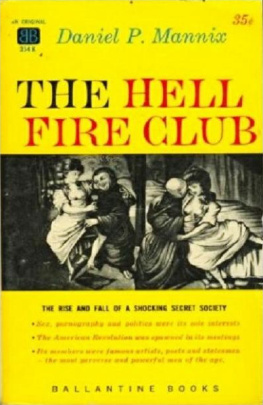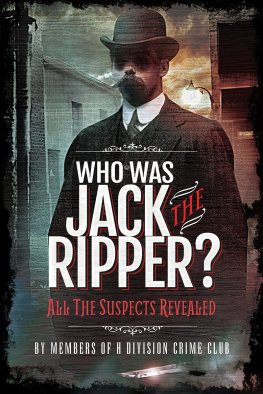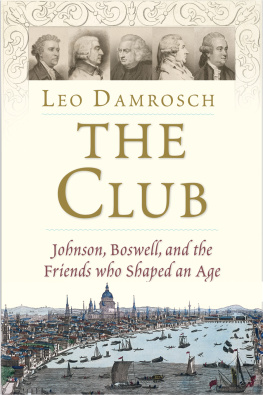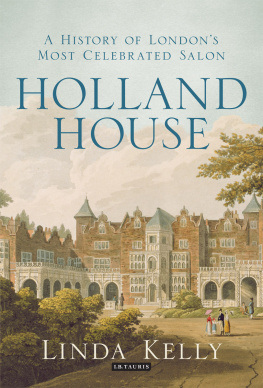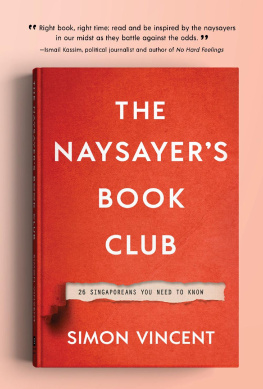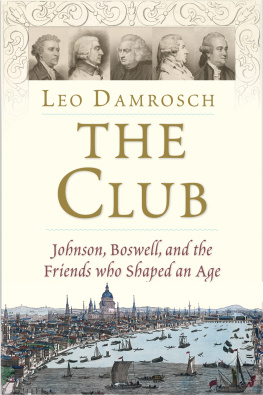Ophelia Field - The Kit-Cat Club: Friends Who Imagined a Nation
Here you can read online Ophelia Field - The Kit-Cat Club: Friends Who Imagined a Nation full text of the book (entire story) in english for free. Download pdf and epub, get meaning, cover and reviews about this ebook. year: 2008, publisher: Harper Press, genre: Detective and thriller. Description of the work, (preface) as well as reviews are available. Best literature library LitArk.com created for fans of good reading and offers a wide selection of genres:
Romance novel
Science fiction
Adventure
Detective
Science
History
Home and family
Prose
Art
Politics
Computer
Non-fiction
Religion
Business
Children
Humor
Choose a favorite category and find really read worthwhile books. Enjoy immersion in the world of imagination, feel the emotions of the characters or learn something new for yourself, make an fascinating discovery.

- Book:The Kit-Cat Club: Friends Who Imagined a Nation
- Author:
- Publisher:Harper Press
- Genre:
- Year:2008
- Rating:5 / 5
- Favourites:Add to favourites
- Your mark:
- 100
- 1
- 2
- 3
- 4
- 5
The Kit-Cat Club: Friends Who Imagined a Nation: summary, description and annotation
We offer to read an annotation, description, summary or preface (depends on what the author of the book "The Kit-Cat Club: Friends Who Imagined a Nation" wrote himself). If you haven't found the necessary information about the book — write in the comments, we will try to find it.
The Kit-Cat Club: Friends Who Imagined a Nation — read online for free the complete book (whole text) full work
Below is the text of the book, divided by pages. System saving the place of the last page read, allows you to conveniently read the book "The Kit-Cat Club: Friends Who Imagined a Nation" online for free, without having to search again every time where you left off. Put a bookmark, and you can go to the page where you finished reading at any time.
Font size:
Interval:
Bookmark:
OPHELIA FIELD
The Kit-Cat Club

To Paul, and the other members of the
Second Hungarian Literary Society
A detailed chronology and other additional material may be found at www.opheliafield.com
All the good talk over the pies and wine, Congreve's wit, Wharton's fascinating impudence, and Addison's quiet humour, is lost forever without record. The Kit-Cat had no Boswell.
G. M. TREVELYAN , The Times, 10 March 1945
Persons in great Station have seldom their true Characters drawn till several Years after their Deaths. Their personal Friendships and Enmities must cease, and the Parties they were engaged in be at an end[I]f an English Man considers the great Ferment into which our Political World is thrown at present, and how intensively it is heated in all its parts, he cannot suppose that it will cool again in less than three hundred Years.
JOSEPH ADDISON , The Spectator, no. 101, 25 June 1711
Remember that a free State is only a more numerous and more powerful Club
SIR WILLIAM JONES , The Principles of Government, in a Dialogue between a Scholar and a Peasant, 1783
T HE K IT -C AT C LUB existed at a pivotal point in British history, and its members participated prominently in the cultural, constitutional and social revolutions of their times. The Kit-Cat Club's story can therefore be read as a study of how the political stability Britain experienced after 1720 was constructed and defended from the 1690s onwards. For over twenty yearsfrom the aftermath of the Glorious Revolution in 1688, through two long and expensive wars against Catholic France, into the reign of George I after 1714nearly all roads in British politics and culture led through the Kit-Cat Club, or took their direction in opposition to it.
That is the most objective explanation of why I wanted to write the first full biography of the Kit-Cat Club, but there were other reasons. This is, above all, a book about friendship. Having previously written on a female friendship in the early eighteenth centurythe relationship between Queen Anne and her favourite, Sarah ChurchillI wanted to examine the more reticent but equally powerful male friendships of the same period. I was also interested in universal questions of how much we should be in business for ourselves, or how far we should be prepared to broker favours for friends, and nothing could better dramatize these dilemmas than the Kit-Cats' relationships with one another.
Of the fifty-odd Kit-Cat members, I have concentrated on a dozen, and within that dozen, on a literary quintet who are relatively well known today: Joseph Addison, William Congreve, Richard Steele, John Vanbrugh and the publisher Jacob Tonson. This is therefore also a book about being a writer. Those who look back to some hypothetical golden age, before commercialism corrupted the arts, will be consoled by how similar the anxieties of the Kit-Cat authors were to those of many authors today. The Kit-Cat Club existed at the threshold between aristocratic and professional writing, and so developed a form of collective patronage for literary production that was suited to both. I was first drawn to the Kit-Cat authors by the fact that theirs were hardworking writing lives, supplemented by day-jobs and by a sense of wider public duty. I was curious to examine creative lives unprejudiced by the later Romantic cult of the artist, which still has us largely in its thrall.
Richard Steele once called for readers of his paper, The Spectator, to send in descriptions of their working lives, to give a lively Image of the Chain and mutual Dependence of Human Society. This book traces the chain of dependency that connected the Club's writers and patrons; at times, researching it felt like drawing one of those diagrams in magazines showing how everyone successful in British culture is privately linked to everyone else. As an expos of such connections, this is also a book about class in Britain. As an immigrant to Britain myself, I share the Kit-Cats' interest in the nature of Englishness, particularly the origins of the London elite that defines itself by education and cultural appreciation, while my own lack of strong national identity means that those who hold strong communitarian values, whether in relation to a club or a country, always intrigue me.
To write a book about the Kit-Cat Club is to describe a fabulous conversation extending over two decades, not one word of which is reliably recorded. Many of Jacob Tonson's papers were pulped by the 1940s. Addison asked that most of his personal letters be destroyed, and his correspondence with Steele seems to have suffered this fate. Robert Walpole destroyed many of his personal papers and ordered the confiscation and destruction of many left by other Kit-Cat politicians. William Pulteney destroyed papers that might have shed light on the Club's final days. There is, moreover, no surviving rule or minute book for the Kit-Cat Club. Not one regular diarist has emerged from among its members. The Club's authors seldom wrote autobiographically, and when they did, they rarely described interior worlds or private feelings. In this sense, however, a group biography is an apt form for a book about the Kit-Cats: they believed creative forces came from the commerce or intercourse between men's minds, as opposed to later beliefs in subconscious, individual sources of creativity. They believed that their Club was more, in other words, than the sum of its parts.
Viewing each life through the lens of the Kit-Cat Club is necessarily selective, as every man had many personal and professional relationships, and intellectual influences, unconnected with the Club. While I have occasionally mentioned the most important non-members so as not to skew the historical record, it has been impossible to give every non-Kit-Cat patron, relation, colleague and friend his or her full biographical due. I hope the champions of these figures will forgive me.
Note on Dates, Money, Spelling and Punctuation
Before the English calendar changed in 1752, New Year's Day was 25 March. To avoid confusion for modern readers, all dates in this book, unless indicated, take 1 January as the beginning of the new year, such that a date which would have been 5 February 1699, for example, is given here as 5 February 1700. In addition, the Old Style (Julian) calendar was ten or eleven days behind the New Style (Gregorian) calendar used on the Continent. Unless otherwise stated, all dates are Old Style.
I have often followed an original value in pounds, shillings and pence (or guineas) with an approximation of its relative purchasing power today, though such calculations are notoriously problematic.
I have followed modern usage with respect to spelling and punctuation, butto keep a dash of original flavournot always with respect to capitalization. Abbreviated words have been expanded in all instances except titles of printed works, or where poetic metre demands.
I have also, for the sake of efficiency, used a number of modern words that did not exist in the late seventeenth or early eighteenth century, such as journalist, scientist or publisher (Addison was the first to use the word editor in its modern sense in 1712).
DRYDEN'S FUNERAL, MAY 1700
Thy Wars brought nothing about;
Thy Lovers were all untrue.
'Tis well an Old Age is out,
And time to begin a New.
JOHN DRYDEN , Secular Masque (1700)
O N A WARM London afternoon, 13 May 1700, a crowd of mourners assembled beneath the turret and weathercock of the Royal College of Physicians, then a handsome brick building on the west side of Warwick Lane, near Newgate Prison. They were attending the funeral of former Poet Laureate, John Dryden. Among the writers, actors, musicians, patrons, politicians and publishers gathering to pay tribute to the man generally acknowledged as the greatest writer and critic of his generation were over a dozen members of a controversial dining society known as the Kit-Cat Club.
Font size:
Interval:
Bookmark:
Similar books «The Kit-Cat Club: Friends Who Imagined a Nation»
Look at similar books to The Kit-Cat Club: Friends Who Imagined a Nation. We have selected literature similar in name and meaning in the hope of providing readers with more options to find new, interesting, not yet read works.
Discussion, reviews of the book The Kit-Cat Club: Friends Who Imagined a Nation and just readers' own opinions. Leave your comments, write what you think about the work, its meaning or the main characters. Specify what exactly you liked and what you didn't like, and why you think so.

